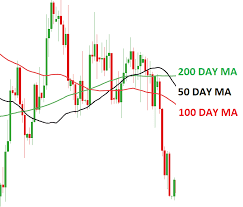The stock market can be a complex and intimidating place, especially for beginners. There are many terms and concepts that can be confusing, making it difficult to understand how things work. This blog post aims to demystify some of the most basic stock market terms, so you can feel more confident navigating the investment world. 1. P/E Ratio (Price-to-Earnings Ratio) The P/E ratio is a metric used to compare a company's stock price to its earnings per share (EPS). It essentially tells you how much you are paying for each rupee of a company's earnings. A higher P/E ratio can indicate that a stock is more expensive relative to its earnings, while a lower P/E ratio can indicate that a stock is cheaper. However, it is important to remember that the P/E ratio is just one factor to consider when evaluating a stock, and it should be compared to similar companies within the same industry. 2. Dividends Dividends are a portion of a company's profits that are paid out to its sharehol...
Moving Average Indicator: An Overview
The moving average indicator is one of the most popular technical analysis tools used by traders to identify trends and potential buy/sell signals. It is a simple yet powerful tool that smooths out the price data of an asset over a specific time period and helps traders identify the direction of the trend.
Moving averages are calculated by averaging the prices of an asset over a specific number of periods, and plotting the resulting line on a price chart. The most commonly used moving averages are the Simple Moving Average (SMA) and the Exponential Moving Average (EMA).
Simple Moving Average (SMA)
The Simple Moving Average is the simplest form of moving average and is calculated by adding up the closing prices of an asset over a specific number of periods, and then dividing the sum by the number of periods.
For example, a 20-period SMA would add up the closing prices of an asset over the past 20 periods, and divide the sum by 20. This would result in a single value that represents the average price of the asset over the past 20 periods.
The SMA is a lagging indicator, which means it is based on past price data and may not reflect current market conditions. It is best used in conjunction with other technical analysis tools to confirm potential trends or reversal signals.
Exponential Moving Average (EMA)
The Exponential Moving Average is a more complex form of moving average that gives more weight to recent price data. The EMA is calculated by giving more weight to the most recent price data and less weight to older price data.
For example, a 20-period EMA would give more weight to the closing prices of the past 20 periods and less weight to the closing prices of the periods before that.
The EMA is considered to be more responsive to changes in market conditions than the SMA, as it gives more weight to recent price data. This can make it a useful tool for identifying potential trends and reversal signals.
Using Moving Averages
Moving averages can be used in a variety of ways to help traders identify potential buy/sell signals and trends in the market. Here are a few common ways that traders use moving averages:
- Identifying Trends: Moving averages can help traders identify the direction of the trend in the market. If the price of an asset is above its moving average, it is considered to be in an uptrend. If the price is below its moving average, it is considered to be in a downtrend.
- Crossovers: Moving averages can also be used to identify potential buy/sell signals. When the price of an asset crosses above its moving average, it is considered to be a potential buy signal. When the price crosses below its moving average, it is considered to be a potential sell signal.
- Support and Resistance: Moving averages can also act as support and resistance levels in the market. When the price of an asset approaches its moving average, it can act as a support level. When the price moves away from its moving average, it can act as a resistance level.
Limitations of Moving Averages
While moving averages can be a useful tool for identifying trends and potential buy/sell signals, they do have some limitations. Here are a few things to keep in mind when using moving averages:
- Lagging Indicator: Moving averages are based on past price data and may not reflect current market conditions. Traders should use other technical analysis tools to confirm potential trends or reversal signals.
- False Signals: Moving averages can sometimes generate false signals, especially in choppy markets. Traders should use other technical analysis tools to confirm potential buy/sell signals.
- No Magic Formula: There is no magic formula for choosing the best moving average or time period. Traders should experiment with different moving averages and time periods to



Comments
Post a Comment